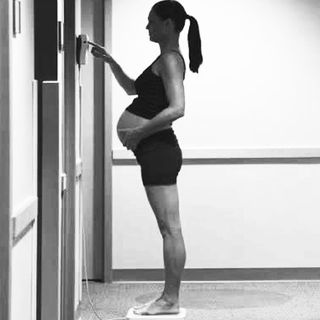
The Small, But Surprising, Link Between Suicide and Sunlight
In many parts of the world, suicides increase during the sunniest months.

Sunlight has been prescribed as a treatment for an array of maladies for well over 100 years. Even today, increasing sun exposure remains a common recommendation, if not a prescribed treatment, for mental health ailments. And it’s well known that lack of sunlight can lead to depressive feelings. Sunlight, the message goes, is as healthy as water.
Except — for certain people, it may not be. In recent years, research has documented a slight, but sound, link between sun exposure and suicide.
From Scandinavia and Greenland to Japan and India, suicides tend to peak not in the winter months, characterized by less daylight, but in the sun-filled summer months; in the one small study that has explored seasonal rates of suicide in India, suicide rates around Mysore spiked in the warmest, sunniest months between February and May, and fell between June and January. In the much larger study in Japan, sun exposure was the only variable predictive of a spike in suicides.
Suicide and its causes are complex, so let’s be clear: sunlight does not cause suicide. However, for some people, it might be a contributing factor. Experts know that sunlight affects the body’s production of the neurotransmitter serotonin, which helps regulate mood; less sun exposure is linked to lower serotonin levels, a relationship considered the root of seasonal affective disorder. Experts also know that low serotonin levels contribute to depression, regardless of season; one of the most effective ways to treat depression is through the use of antidepressant medicines known as selective serotonin reuptake inhibitors (SSRIs), which work to increase serotonin levels.
But here’s where biology gets interesting. SSRIs have been linked to an increased risk of suicide in a small proportion of patients.
Related on The Swaddle:
Suicidal Thoughts Exist on a Spectrum — And Sometimes Involve No Active Plans to Die
“We know that when we treat patients with antidepressants it can take at least three or four weeks to raise their mood,” Fotis Papadopoulos, a professor of psychiatry at Uppsala University in Sweden, who has studied the sunlight-suicide link, told Mosaic in 2017. “During this time, some people become more physically active or agitated, which could potentially make them more likely to act on their thoughts.
“Maybe sunshine acts in a similar way in a minority of people.”
Research into the mental health effects of climate change are suggesting temperature may contribute to the link, too. Sunnier months tend to be warmer, and a recent study of suicide rates in the U.S. and Mexico found suicide rates rose 0.7% and 2.1% respectively when the average monthly temperature increased by 1 degree Celsius. The same study also analyzed more than 600 million tweets for depressive tone and compared them against local temperatures, finding the number of depressed tweets increased the hotter the locale, reported The Guardian in 2018.
This, too, could have a biological aspect; researchers suggest the change in blood flow to the brain, as the body works harder to cool itself in hotter temperatures, could be a contributing factor.
It’s impossible to determine how much sunlight and/or temperature contribute to suicide and even more impossible to judge how much the relationship is biological versus circumstantial. In all likelihood, it’s a combination of both. In 2017, research connected 60,000 farmer suicides in India to increasing temperatures — and the resulting crop loss. Whether we will ever be able to pin down cause-and-effect, the link merits further study — if only because we have every expectation that temperatures and UV exposure will continue to increase.
Liesl Goecker is The Swaddle's managing editor.
Related


The Health Effects of Slouching Range from Acidity to Low Sex Drive
